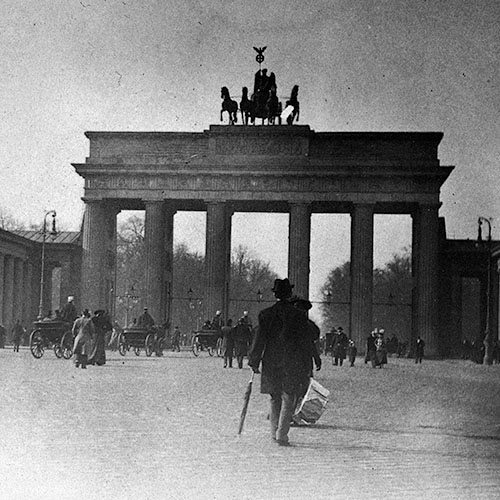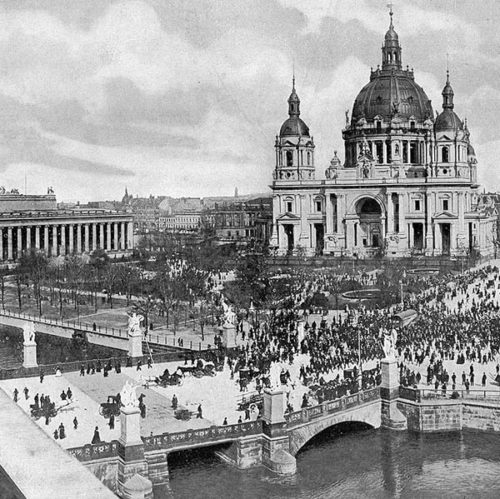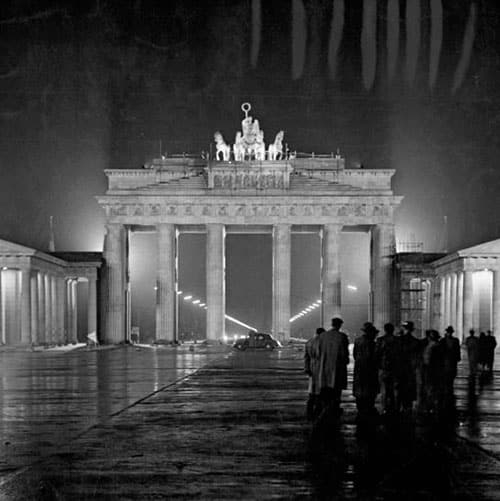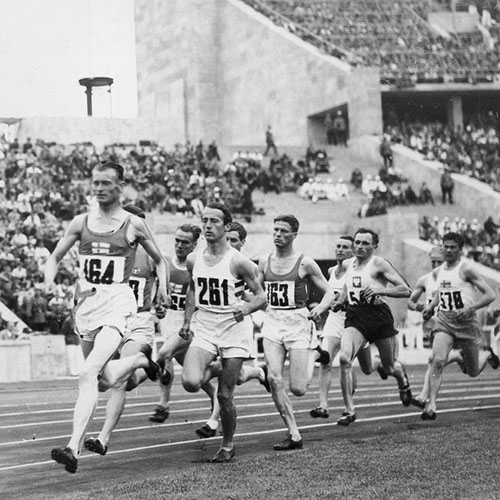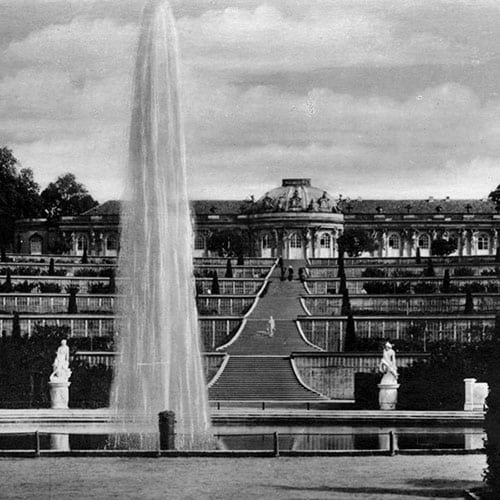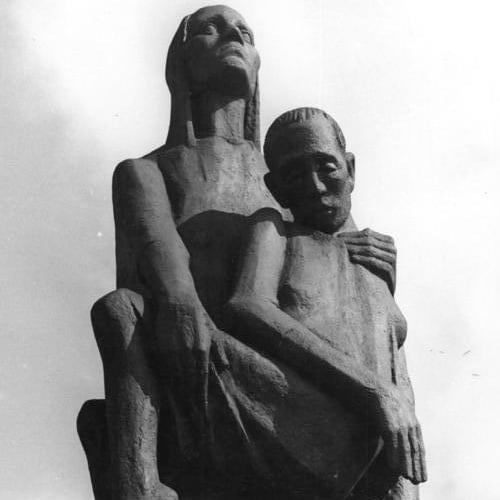“My father was murdered… The British had the most to lose from my father’s potential release from Spandau… It was to prevent the truth emerging about the real reasons for his peace flight in 1941.”
Wolf Rüdiger Hess, in his book ‘My Father Rudolf Hess’
The news, when it finally came on August 17th 1987, felt like the closing of a long-overdue account.
Rudolf Hess, Prisoner No. 7, the last of the Spandau Seven, was dead.
He was 93 years old, a relic from a previous, terrifying age, a man who had been a heartbeat away from Adolf Hitler and who had outlived the monstrous regime he had helped build by more than four decades. He had been found in a small summer house in the prison garden, a length of electrical cord used as a lamp extension wrapped around his neck.
For the world at large, the story seemed simple.
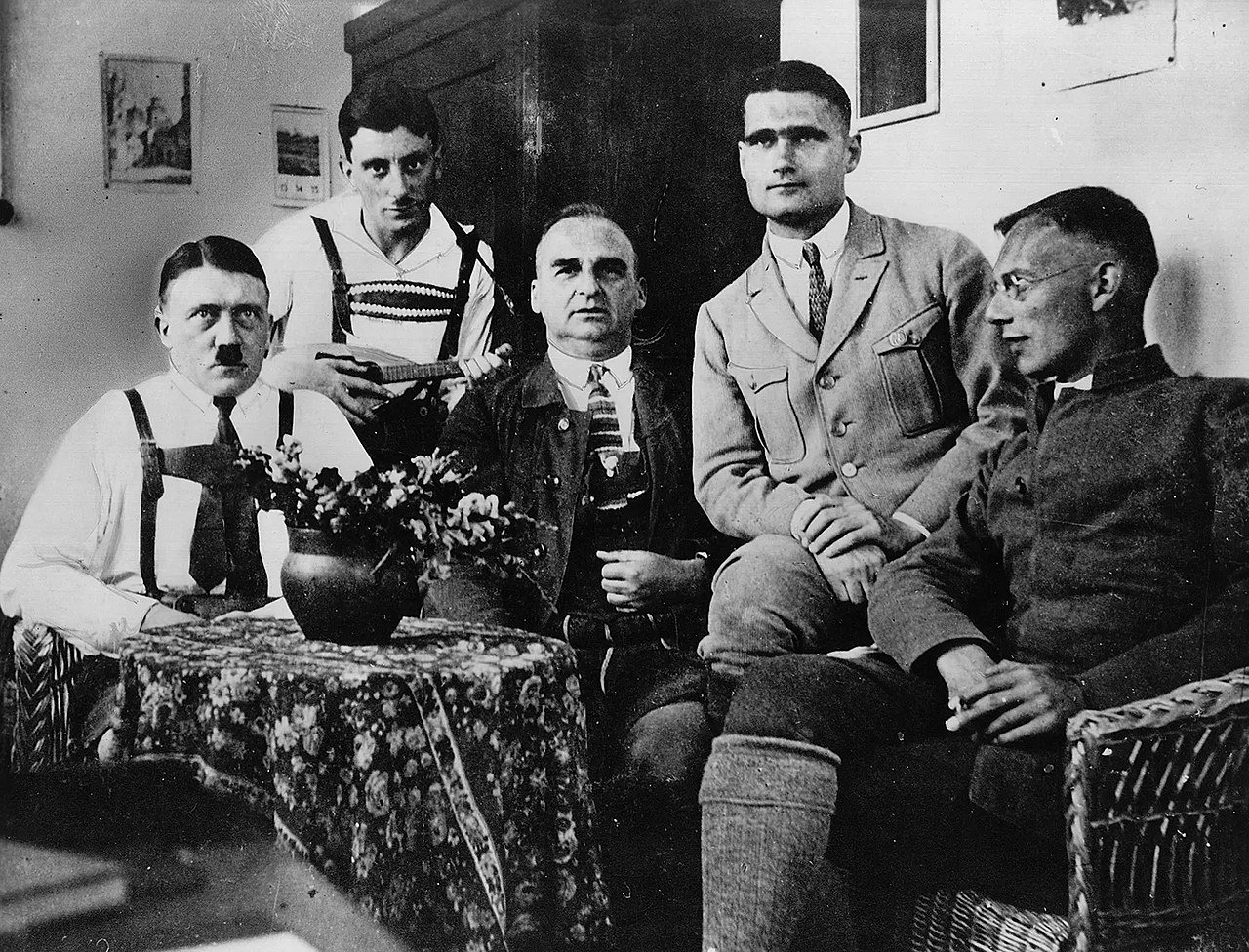
An old, forgotten Nazi, finally succumbing to despair, had taken his own life. The prison, a hulking 19th-century fortress in the British sector of West Berlin, was now empty.
Its purpose was obsolete.
The Four Powers – the United States, Great Britain, France, and the Soviet Union – could finally shut its doors. Within weeks, the bulldozers moved in, grinding the red-brick walls and watchtowers to dust, a deliberate act to prevent the site from becoming a neo-Nazi shrine.

But for a small circle of individuals – his family, his lawyer, his last nurse, and a cadre of historians and conspiracy theorists – the official report was not an ending but the beginning of a furious debate.
The idea that Hess, a man crippled by arthritis, barely able to lift his arms above his head, could have overpowered his guard and skillfully hanged himself seemed preposterous. The farewell note found in his pocket was, his family claimed, written twenty years earlier during a previous bout of depression.
And so the questions began, echoing in the vacuum left by Spandau’s demolition.
Was Hess murdered? Was his death a final, brutal act of political expediency?
To understand the answer, and why anyone might want a 93-year-old man dead, one must look back not just to the garden house in Spandau, but to the Bavarian beer halls of the 1920s, to a prison cell in Landsberg where Mein Kampf was born, and to the skies over Scotland on a bizarre night in the spring of 1941.
–
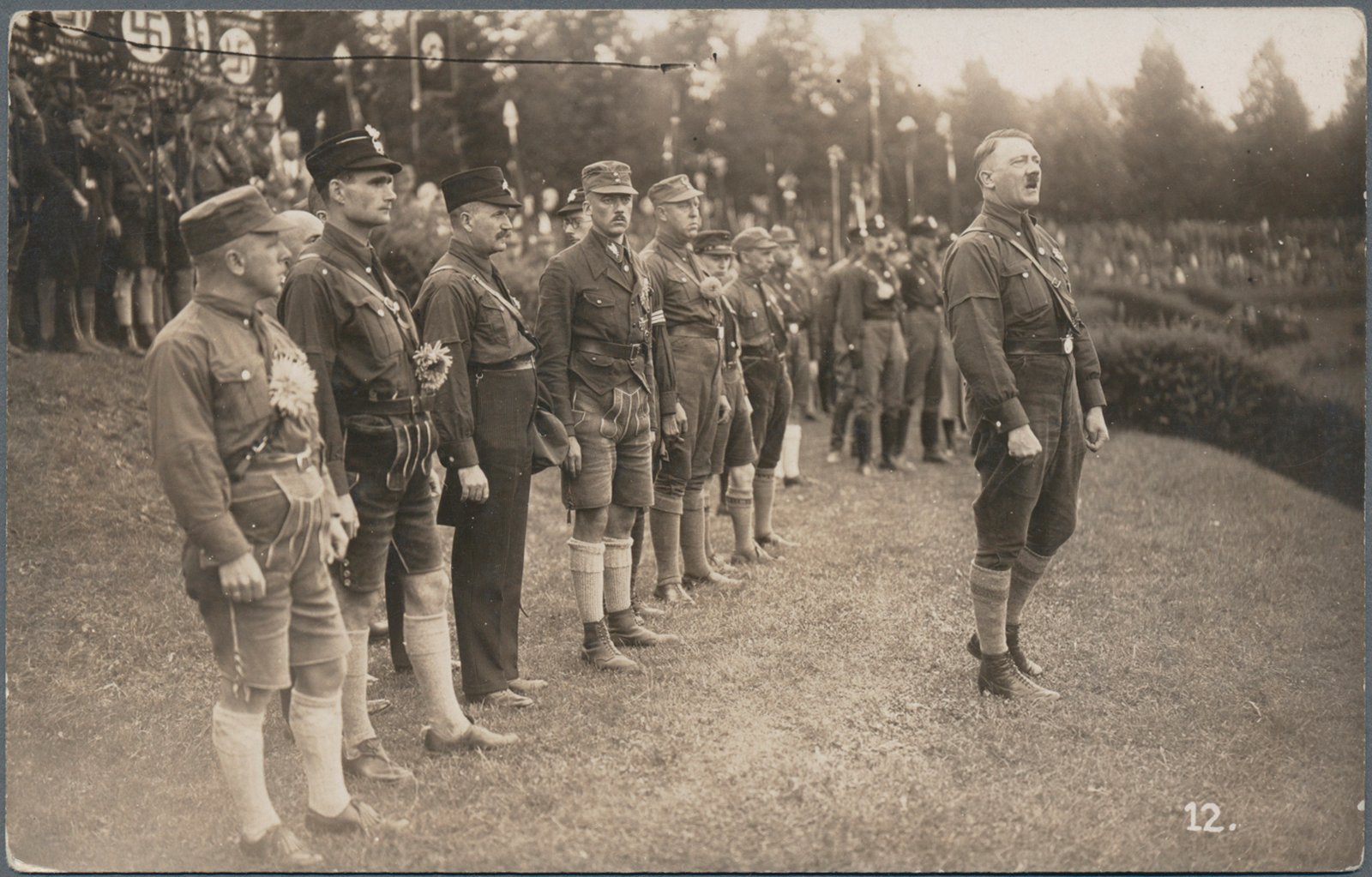
Rudolf Hess - Hitler's Shadow
“Hess was the zealot, the keeper of the Grail. His apartment was so much a shrine to Hitler that you had to worry about bumping your head on a portrait of the Führer… He possessed but a single loyalty and a single idea: Adolf Hitler.”
Albert Speer, Hitler’s Armaments Minister and fellow Spandau prisoner, in his book Inside the Third Reich
Long before he was the world’s most solitary prisoner, Rudolf Walter Richard Hess was Adolf Hitler’s shadow.
Born in Alexandria, Egypt, in 1894 to a prosperous German merchant family, Hess’s early life was one of colonial privilege. He did not reside in Germany until he was fourteen, and his path seemed destined for the family business.
The outbreak of the First World War, however, provided a violent escape route. He volunteered as an infantryman in the German Army, fought in the First Battle of Ypres and the Battle of Verdun, where he was wounded. Following his convalescence, he was transferred to the Balkans, as Romania had just entered the war on the Allied side, where he was again wounded – this time more severely with a shot through the torso.
As he was recovering from this serious injury, he applied for enrolment in the air force and after training joined a fighter squadron on October 14th 1918 – a mere few weeks before the end of the war.
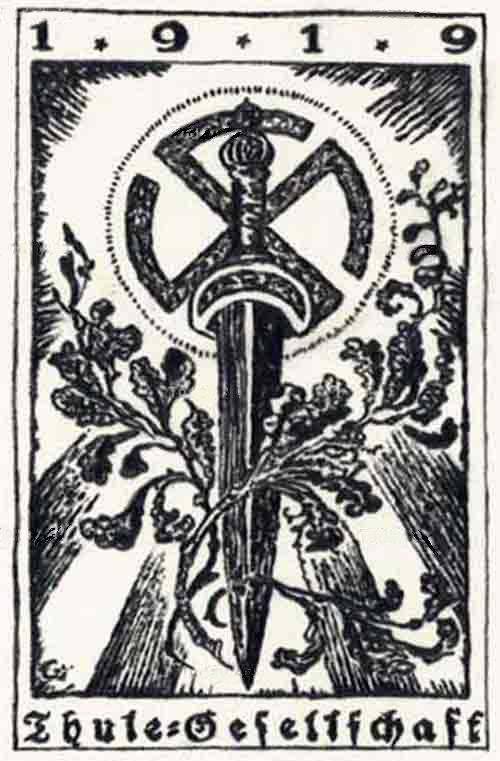
The post-war years found Hess adrift in the chaotic political landscape of Munich. Like many former soldiers, he was drawn to the radical right, simmering with resentment over Germany’s defeat and the terms of the Treaty of Versailles. For Hess, the small, ultra-nationalist group that he joined was the Thule Society. Once again he would be injured, this time fighting left-wing revolutionaries in Munich.
After the situation in the city calmed down, Hess enrolled in the University of Munich to study history and economics. It was here that he fell under the sway of Professor Karl Haushofer, whose theories of ‘geopolitics’ and advocacy of territorial expansion would form a core tenet of Nazi ideology.
The defining moment of his life came in a Munich beer hall in July 1920.
There, he heard an electrifying speech by an obscure political agitator named Adolf Hitler.
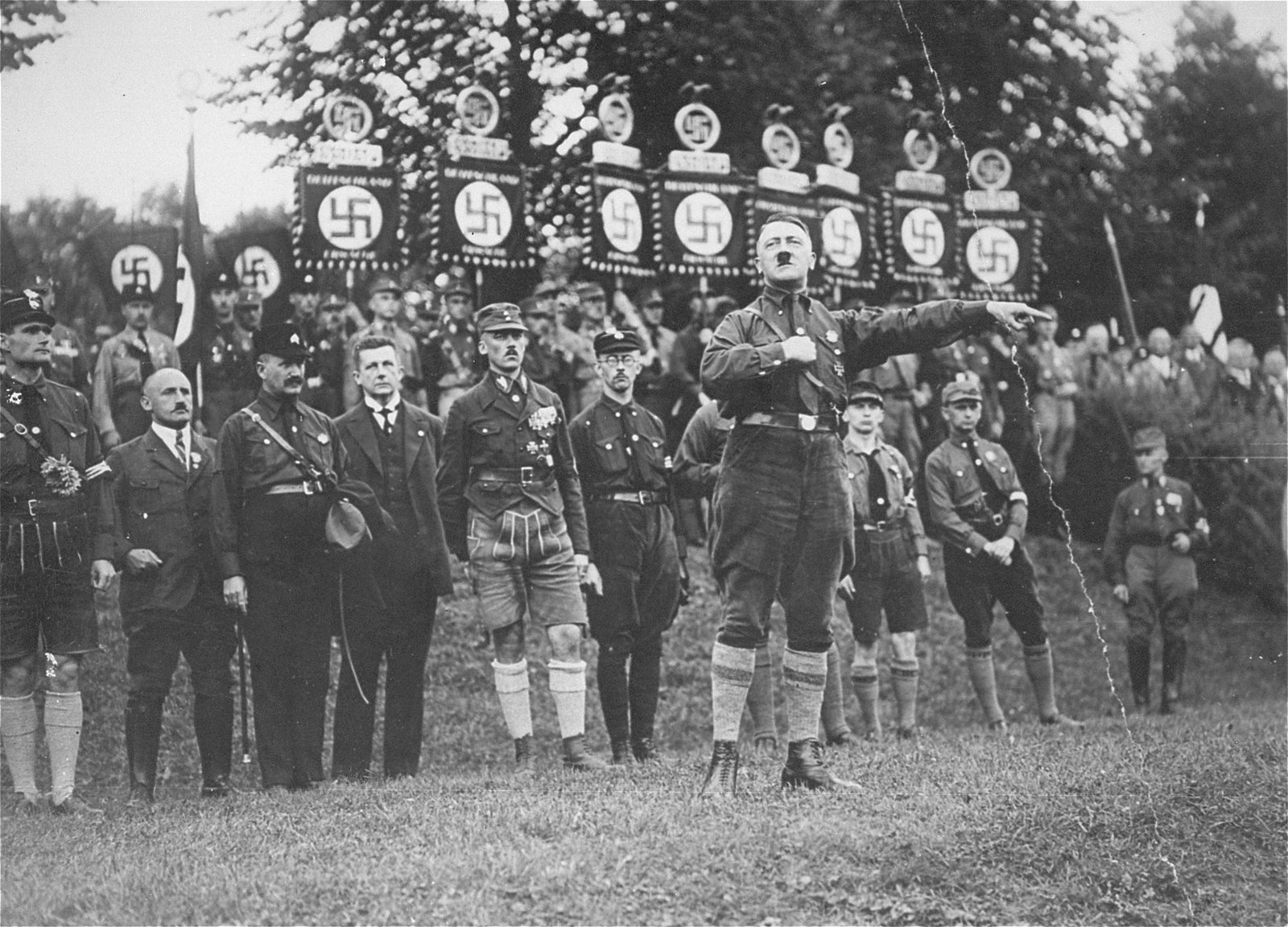
Hess was instantly captivated.
He described the experience “as though overcome by a vision.” He joined the fledgling National Socialist German Workers’ Party as member number sixteen, throwing himself into the cause with a devotion that bordered on the religious. He became a brawler at early party rallies, physically defending Hitler from hecklers and Marxist agitators.
His loyalty was absolute.
He participated in the failed 1923 Beer Hall Putsch, Hitler’s first audacious attempt to seize power. After the putsch collapsed in a hail of police gunfire, Hess escaped to Austria but then voluntarily returned to share Hitler’s imprisonment in Landsberg Prison.
It was here that their bond solidified – as Hitler sat out the relatively mild sentence meted out on him. Hess became Hitler’s personal secretary, friend, and confidant. He painstakingly took down the dictation for Hitler’s political manifesto, Mein Kampf, even making editorial suggestions.
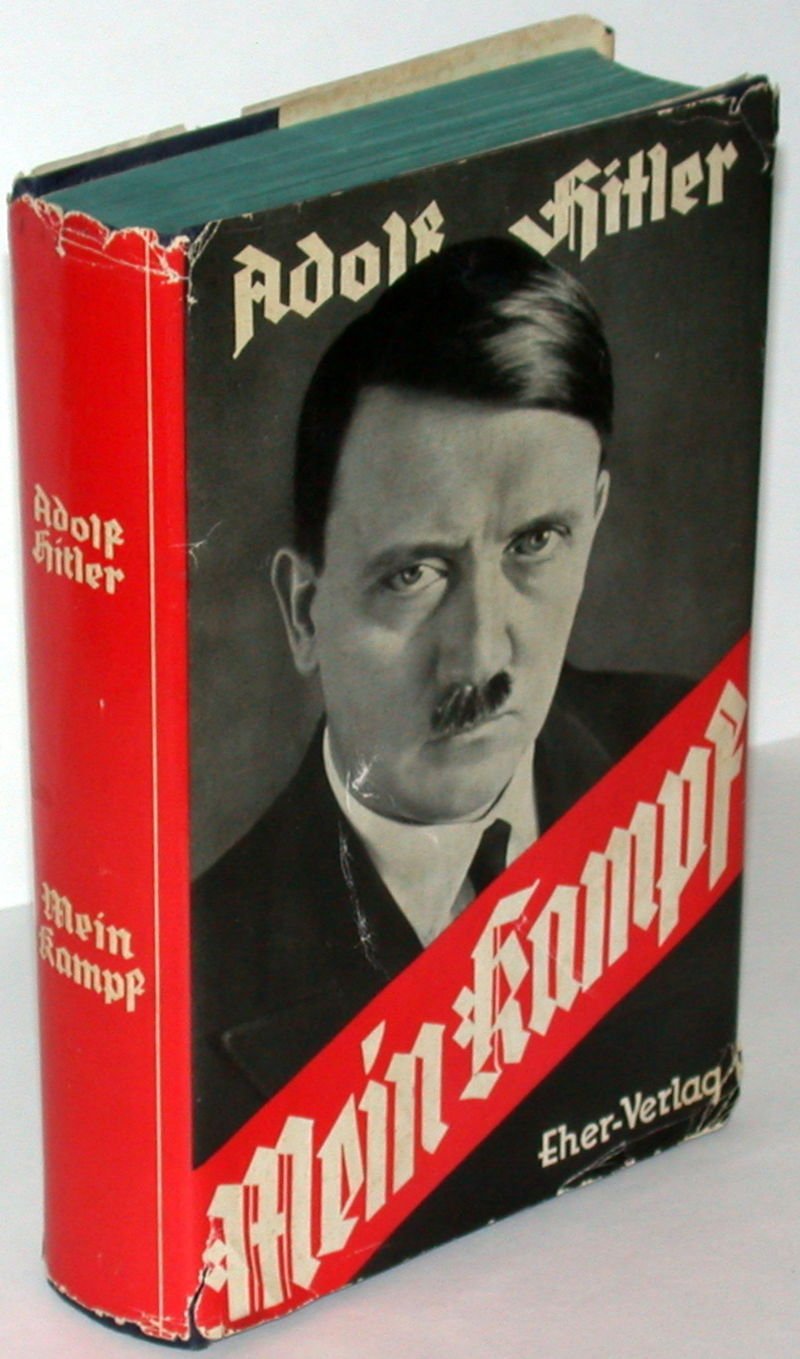
When Hitler came to power in 1933, Hess’s loyalty was rewarded.
He was appointed Deputy Führer, a position that, on paper, made him the second most powerful man in the party.
In 1939, Hitler officially named him third in the line of succession, after Hermann Göring.
Yet, Hess’s role was always more ceremonial than substantive. He was the ultimate functionary, signing laws, appearing at rallies, and managing the party’s internal bureaucracy.
He was shy, insecure, and lacked the ruthless ambition of his rivals like Göring, Joseph Goebbels, and the rising Martin Bormann, who worked tirelessly to undermine Hess’s influence and control access to the Führer.
As a rabid anti-semite, Hess pushed hard for policies targeting Germany’s small Jewish population – but found himself relegated to welcoming delegates of German expatriates to meetings and delivering the annual Nazi Party Christmas address.
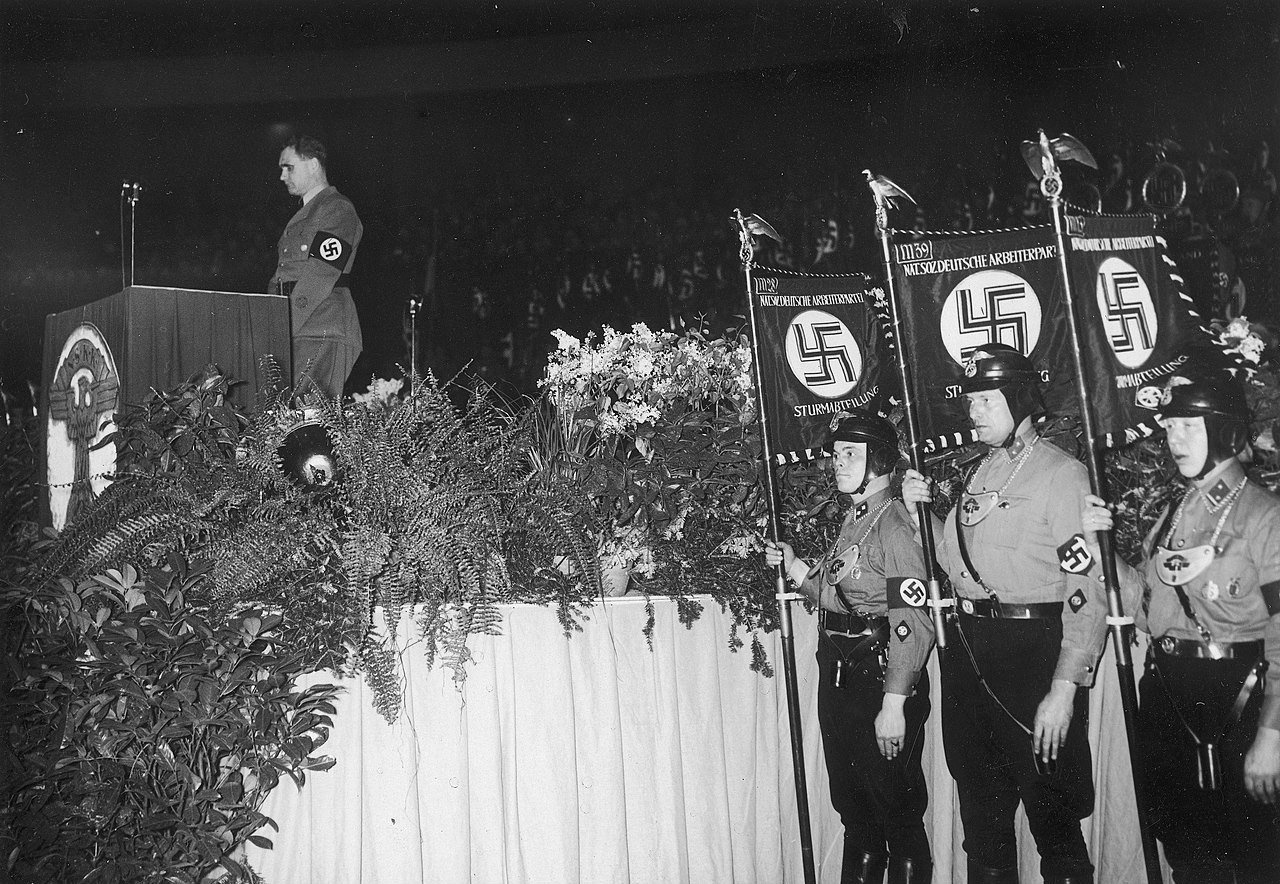
As the 1930s wore on and Hitler’s focus shifted to foreign policy and war, Hess found himself increasingly marginalised. The committees he was appointed to had little real power, and Bormann, his own former chief of staff, skillfully supplanted him.
As German historian Joachim Fest, in ‘The Face of the Third Reich’ would describe:”After 1934, he barely counted. Hitler received him less and less often, and in the ante-room, Hess could scarcely hold his own against men like Göring and Goebbels… Hitler made use of his unfailing loyalty but no longer assigned him any real tasks of power.”
The man who had been at the center of the movement now found himself on the periphery, a forgotten disciple.
This growing sense of irrelevance may have been the very thing that spurred him to undertake the most dramatic and bizarre act of his life.
–
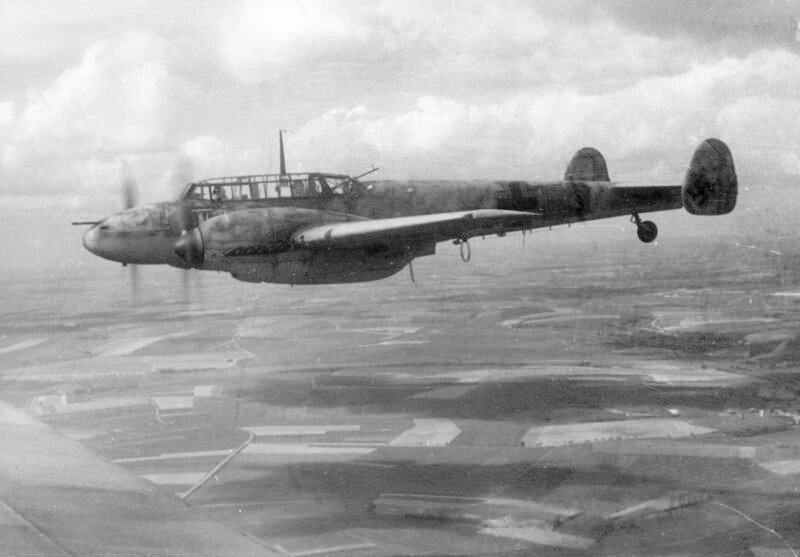
Rudolf Hess - Escape & Imprisonment
“At first I was not sure whether to be glad or sorry. But I was not in doubt for very long… Hess or no Hess, I was going to beat the living daylights out of Hitler and his gang.”
Winston Churchill, in The Grand Alliance, describing his immediate thoughts upon learning of Hess’s capture
On the evening of May 10th 1941, as the Battle of Britain raged, Rudolf Hess climbed into the cockpit of a specially modified Messerschmitt Bf 110 fighter-bomber at an airfield near Munich.
He was a skilled pilot, and displaying remarkable navigational prowess, he flew solo across Germany and over the North Sea, navigating by charts on a dark, foggy night.
His destination: Scotland.
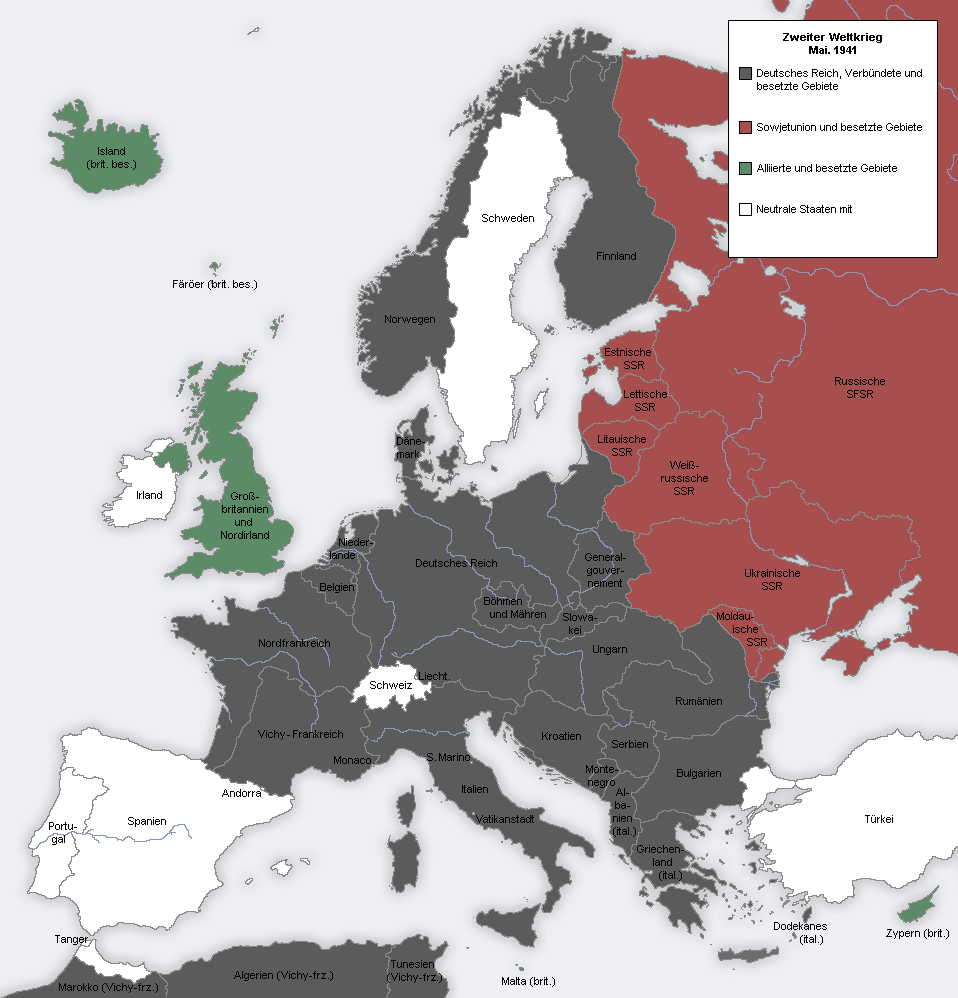
Just weeks before Hitler was to launch his surprise invasion of the Soviet Union, Hess was embarking on a self-styled peace mission. His plan was to contact the Duke of Hamilton, a British nobleman he mistakenly believed to be a leading figure in a pro-peace faction that could unseat Winston Churchill. Despite not knowing the Duke personally, Hess admired him as one of the first men to fly over Mount Everest.
Hess, still influenced by his Munich professor’s geopolitical theories, believed that the British and the Germans were natural allies who should be fighting Bolshevism together, not each other. It was the same professor, Haushofer, who recommended that Hess meet the Duke of Hamilton.
By brokering a peace, it is possible that he hoped to restore his own flagging prestige in Hitler’s eyes.
Flying solo for almost 1,000 miles from Bavaria, Hess reached the English coast at 10:23pm – descending rapidly over Bamburgh, Northumberland and flying low enough over the fields to see people below and wave at them.
At 11.09pm, he parachuted out of his aircraft into a field near Eaglesham, Scotland – landing so awkwardly that he broke an ankle.
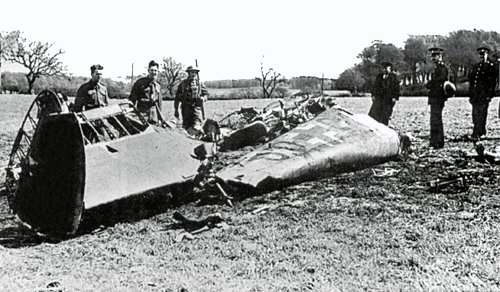
Recounting a few weeks later the details of his flight in a letter to his son, Hess said:
“I woke up in a German-looking meadow, not realising where I was and what was happening to me. When I first saw my parachute lying behind me, it became clear to me that I had arrived in Scotland, the first landing place of my ‘Plan’. I was lying some ten metres from the front door of a house of a Scottish goatherd. People came running toward me, alarmed by the burning aircraft. They looked at me in a compassionate way.”
The first person he encountered was a local ploughman, David McLean, who, armed with a pitchfork, took the mysterious German captive. Hess initially gave a false name, “Captain Alfred Horn,” and insisted he had an urgent message for the Duke of Hamilton.
The news of Hess’s arrival was a bombshell for both sides.
In Berlin, a furious and embarrassed Hitler, to whom Hess had left a letter explaining his intentions, ordered the press to denounce his deputy as a madman suffering from ‘delusions’.
Propaganda Minister, Joseph Goebbels, lamented in his diary, “The German public is rightly asking how such a fool could be second to the Führer.”
In London, the initial confusion gave way to intense curiosity. Hess’s proposals—a free hand for Germany in Europe in exchange for respecting the British Empire—were summarily dismissed.
Winston Churchill’s government was resolute in its determination to fight on.
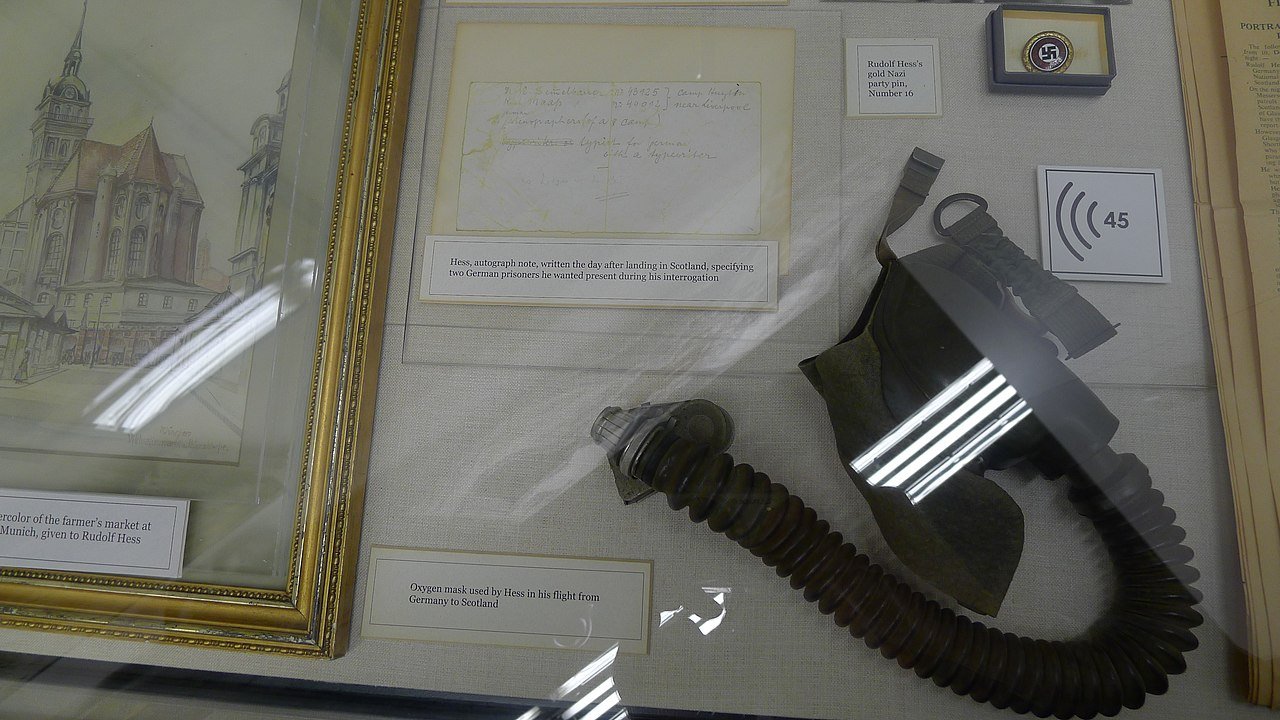
Instead of a hero’s welcome, Hess became a prisoner of war.
He was interrogated by British intelligence, who found his political ramblings both bizarre and largely useless from an intelligence perspective. He was moved between several secure locations, including the Tower of London, becoming its last ever state prisoner.
During his four years of captivity in Britain, his mental state deteriorated. He displayed paranoia, claimed his food was being poisoned, and feigned amnesia.
After the war, he was flown back to Germany to stand as one of the major war criminals at the Nuremberg Trials.
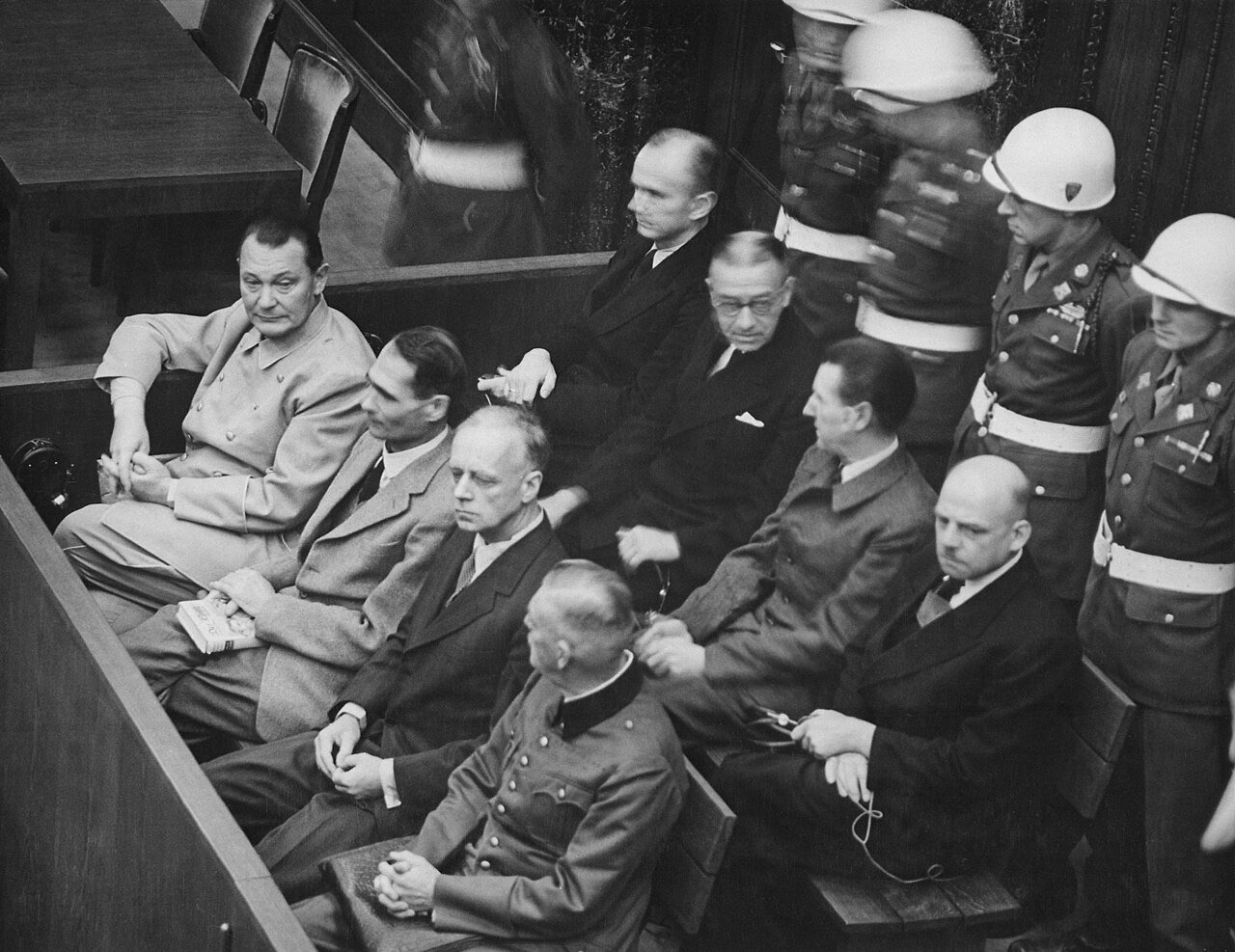
In the dock alongside Hermann Göring, Albert Speer, and the other captured leaders of the Third Reich, Hess presented a strange and pathetic figure.
For much of the proceedings, he sat with a vacant expression, claiming to have no memory of his past. The tribunal even debated his fitness to stand trial. But in a moment of high drama, he suddenly declared his amnesia to have been a sham.
Sir David Maxwell-Fyfe, British Deputy Chief Prosecutor at Nuremberg, would write: “Yesterday, in the witness box, Hess declared his loss of memory was a tactic only… I am sure that this dramatic admission, as well as being carefully timed, marks him as still a master of publicity.”
In the end, he was acquitted of war crimes and crimes against humanity, as the evidence was insufficient to directly link him to the Holocaust or other atrocities.
However, he was found guilty on two counts: ‘crimes against peace’ (for his role in planning the war) and ‘conspiracy with other German leaders to commit crimes’.
While the Soviet judge demanded the death penalty, the other Allied powers sentenced him to life imprisonment.
–

Rudolf Hess - Spandau Prison & The Loneliest Man In The World
“Spandau was a living tomb, a political anachronism, a theatre of the absurd. Here, four great nations of the world mounted a twenty-four-hour guard on one old man who could hardly walk.”
Eugene K. Bird, former US Commandant of Spandau Prison, in The Loneliest Man in the World
In July 1947, Hess and six other convicted Nazi leaders were transferred to Spandau Prison in Berlin.
This vast, forbidding structure, built to hold 600 inmates, was now to be their world.
Its governance was a unique and cumbersome Cold War relic: a Four-Power administration, with the US, UK, France, and the USSR rotating control on a monthly basis.
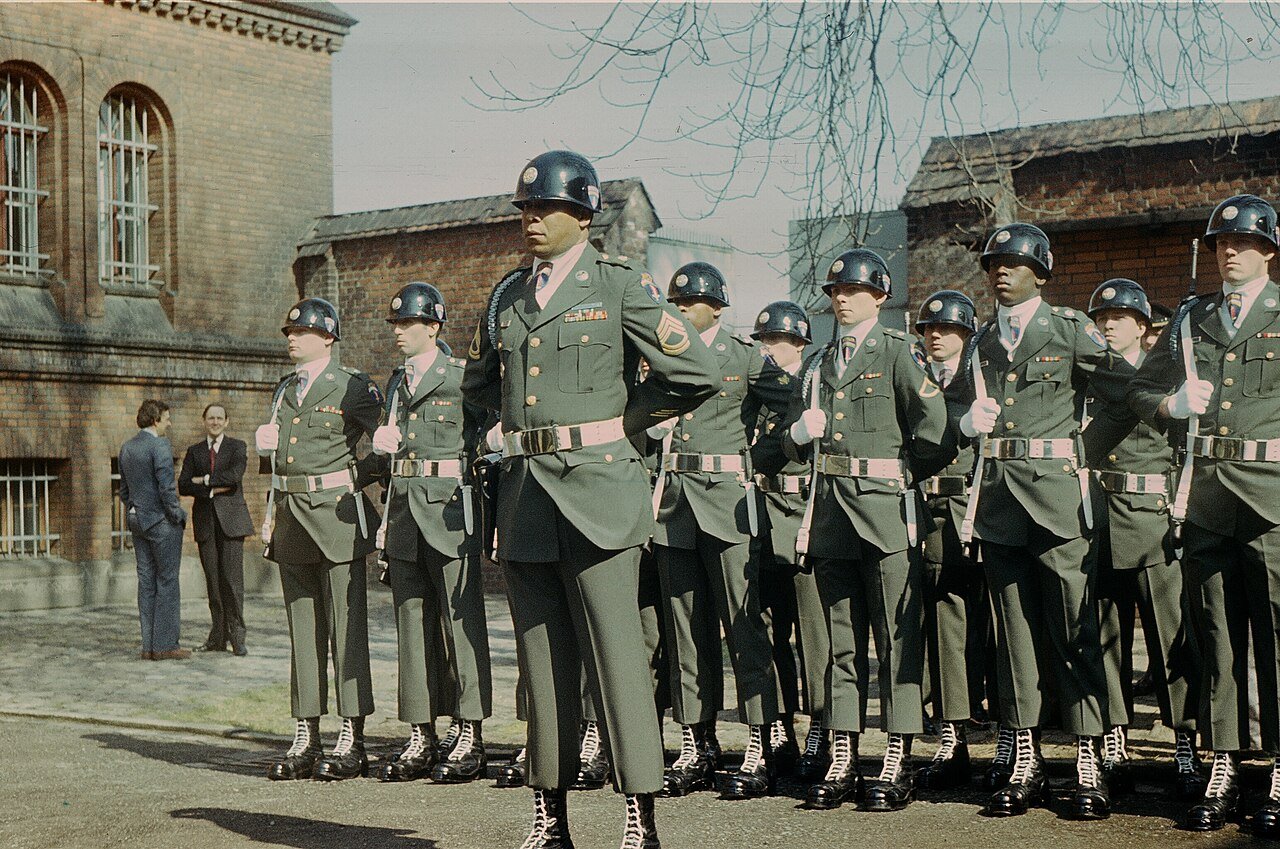
Life in Spandau was monotonous and highly regulated.
The ‘Spandau Seven’ were known only by their numbers.
They were subject to a rigid daily routine of menial tasks, walks in the prison garden, and reading approved books. Their relationships with each other were fraught with the ghosts of their past power struggles. Albert Speer, the former armaments minister, tried to maintain a disciplined and repentant facade, while Karl Dönitz and Erich Raeder, the Grand Admirals, kept a haughty military bearing.
Due to the number of cells available, an empty cell was left between the prisoners’ cells, to avoid the possibility of prisoners’ communicating in Morse code.
Hess remained a loner, paranoid and socially awkward, often complaining of imagined ailments.

Over the years, the prison population dwindled.
Some, like the former foreign minister Konstantin von Neurath, were released due to ill health.
Others, like Speer and Baldur von Schirach, served their full twenty-year sentences and were released in 1966.
After their departure, Rudolf Hess became Spandau’s sole inmate.
Hess remained a loner, paranoid and socially awkward, often complaining of imagined ailments.
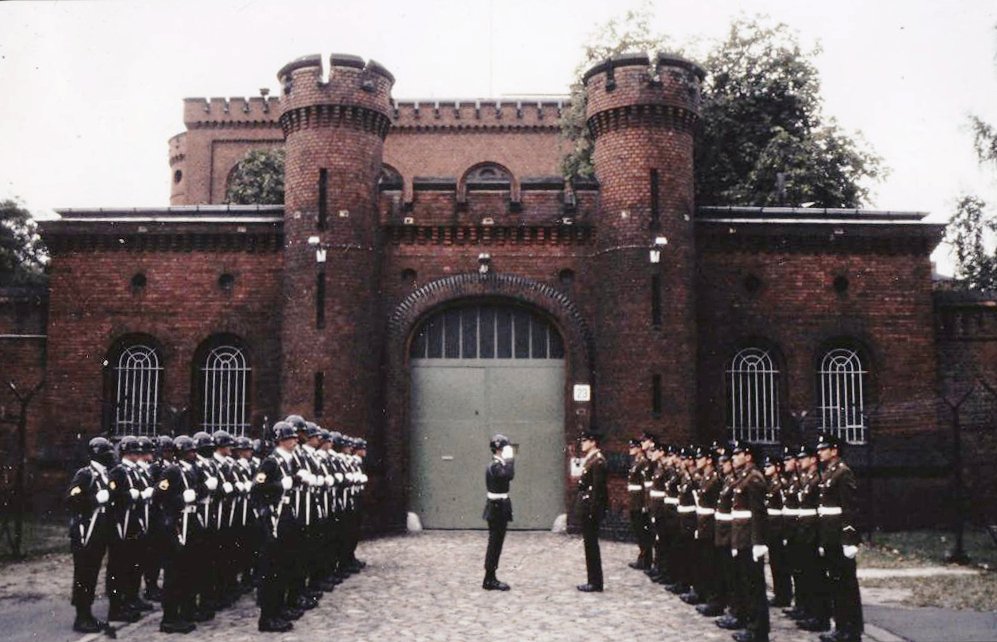
For the next 21 years, he was frequently addressed in press articles as ‘the loneliest man in the world’.
However, he was not completely alone.
A staff of over 100 guards, administrators, and cooks from four nations was maintained at immense cost just for him.
His life was an absurd piece of political theater.
Each day, the flags of the four powers were raised over a prison holding a single, aging man.
Repeated attempts by his family and Western governments to secure his release on humanitarian grounds were consistently vetoed by the Soviet Union, who saw Hess as a potent symbol of defeated Nazism and remembered the colossal sacrifices of the Eastern Front.
During his long imprisonment, Hess suffered from severe bouts of depression and made several suicide attempts.
In 1969, after being hospitalized following one such attempt, he wrote a long, rambling letter to his family that he considered his last will and testament. It would later become a crucial piece of evidence in the mystery of his death.
–
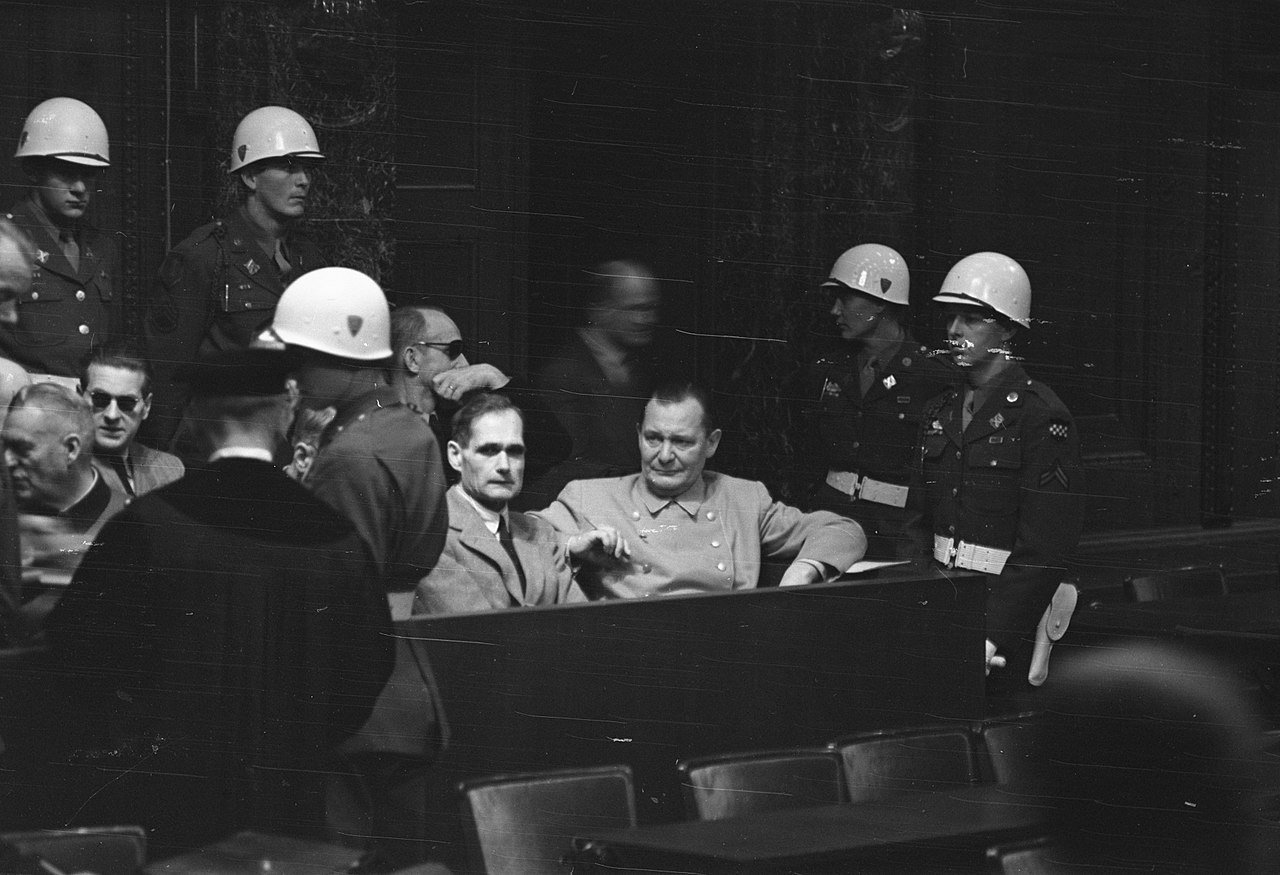
Rudolf Hess - Suicide or Murder?
“All the evidence supports the conclusion that Rudolf Hess took his own life. The enquiries which were conducted have produced no evidence whatsoever to substantiate the various theories that have been advanced.”
Statement by the British Foreign & Commonwealth Office, in a 1992 Parliamentary response
The official story of Hess’s death, as reported by the Four Powers on September 17th 1987 – one month after the event – was simple: suicide by hanging.
At approximately 2:30pm on August 17th, Hess was allowed his daily walk in the prison garden, accompanied by an American guard, Corporal Jordan. He went into the small summer house that had been set up for him as a reading room.
A short time later, Jordan looked inside and saw Hess on the floor with an electrical cord wrapped around his neck, the other end tied to a window latch. Efforts to resuscitate him failed, and he was pronounced dead at the British Military Hospital at 4:10pm.
A note addressed to his family was found in his pocket, thanking them for everything. The verdict seemed open and shut.
But the narrative quickly began to fray at the edges.

The most vocal proponents of the murder theory were Hess’s son, Wolf Rüdiger Hess, and his lawyer, Dr. Alfred Seidl.
They pointed to several glaring inconsistencies:
- Physical Impossibility: At 93, Hess was incredibly frail. He suffered from severe arthritis in his hands and could barely walk without assistance. His family and his nurse, Abdallah Melaouhi, argued that he lacked the physical strength and dexterity to tie a complex knot, hoist himself up to the window latch, and successfully hang himself. He was reportedly so feeble he couldn’t tie his own shoelaces.
- The ‘Suicide’ Note: The note found on his body was not a new confession of despair. Forensic analysis confirmed that it was the same letter he had written nearly 20 years earlier, in 1969. The family had even been shown this letter after his previous suicide attempt. Why would a man about to kill himself use a two-decade-old note?
- The Autopsy Evidence: A second, independent autopsy commissioned by the Hess family and conducted by the renowned German pathologist Professor Wolfgang Spann revealed marks on Hess’s neck that were, in Spann’s view, more consistent with strangulation than hanging.
- The Testimony of the Nurse: Abdallah Melaouhi, the Tunisian nurse who had been with Hess for years, was adamant that Hess was murdered. In his book, I Looked His Killers in the Eyes!, Melaouhi claimed that when he arrived at the summer house, he saw two men in US military uniforms who seemed suspicious and that the scene did not look like a suicide. He also contended that Hess was in good spirits that day, looking forward to an upcoming family visit.
- Motive: The British Cover-up? This is the heart of the most compelling murder theory. It posits that with the political climate shifting in the late 1980s under Mikhail Gorbachev, the Soviet veto on Hess’s release was about to be lifted. British intelligence, so the theory goes, could not allow this to happen. The fear was that upon his release, Hess would finally reveal embarrassing secrets about his 1941 peace mission. Specifically, that his flight was not the act of a lone madman, but that he had been lured to Britain by a faction within the British establishment, and that this communication was known to, and possibly even sanctioned by, elements of British intelligence. To prevent these revelations, which would rewrite a heroic chapter of British wartime history, assassins were dispatched. A 2013 Scotland Yard report, released under the Freedom of Information Act, revealed that in 1989, British surgeon Hugh Thomas had provided detectives with the names of two alleged British agents he claimed had carried out the murder. The investigation, however, was closed after the Director of Public Prosecutions advised that there was “no cogent evidence to suggest that Rudolf Hess was murdered.”
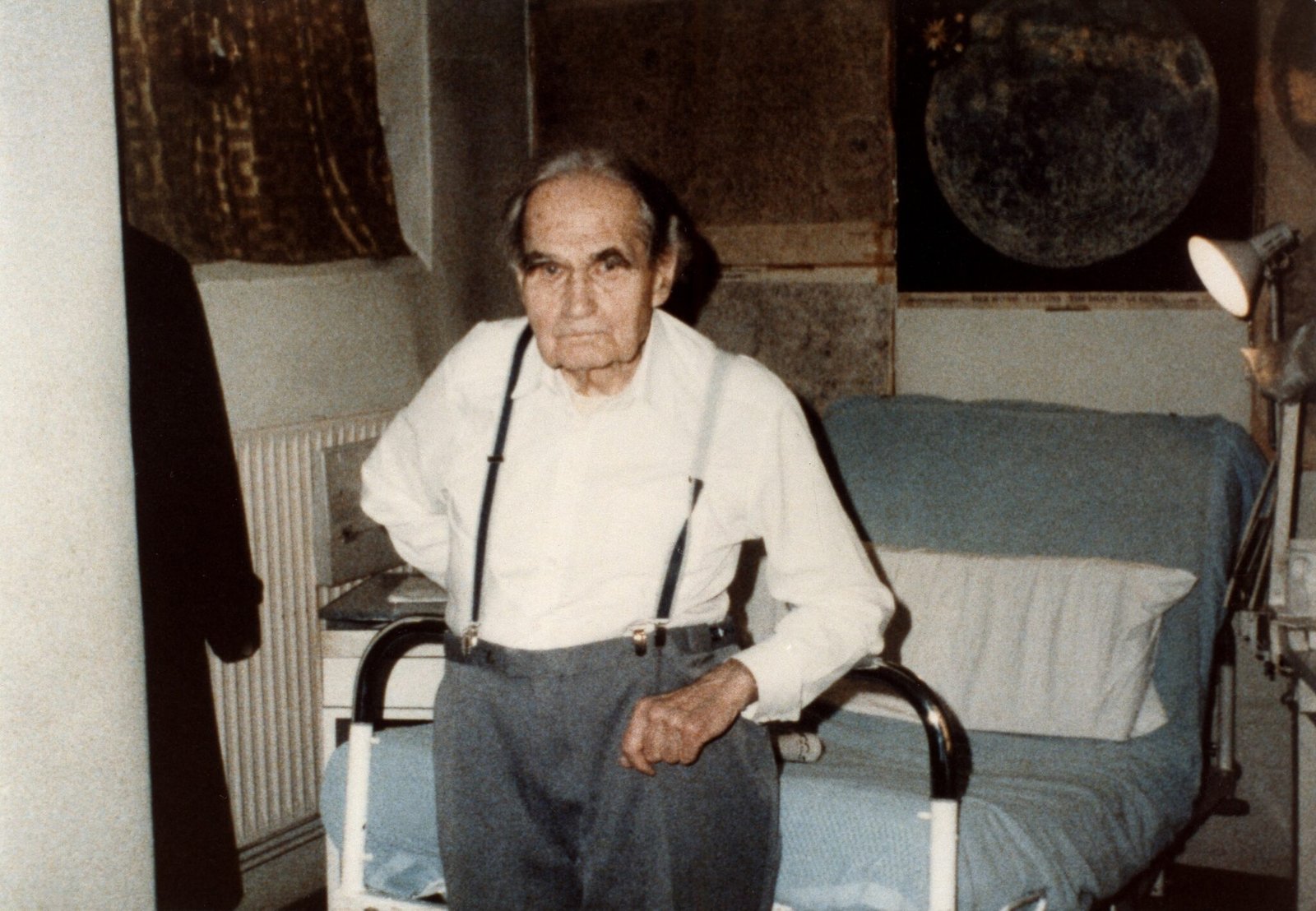
The official narrative, however, has strong counterarguments. The Allied authorities have consistently refuted the murder claims. They argue that:
- Despite his age, Hess was still capable of the actions required. Experts consulted for the official investigation concluded the injuries were consistent with an “unusual hanging situation.”
Hess had a documented history of mental instability and previous suicide attempts. During his interrogation, after landing in Scotland in 1941, Hess had asked to be let out of his first-floor room and rushed to the landing before throwing himself over a set of stairs and breaking a leg. Anticipating Germany’s defeated in February 1945, he had tried to commit suicide by stabbing himself in the chest with a bread knife, to no effect. A final, successful attempt was not out of character. - The conspiracy theories lack any definitive proof. The claims of Nurse Melaouhi and Dr. Thomas have been dismissed by authorities as speculation. There is no hard evidence of British assassins, only rumor and second-hand accounts.
- Why murder a 93-year-old man who was largely seen as a delusional figure, whose testimony would be easily discredited? It was a high-risk operation for a very uncertain gain.

Weighing against these conspiracies is a principle Occam’s Razor logic: sometimes the simplest explanation is the true one.
Numerous reputable historians and officials have poured cold water on the murder claims.
One key voice is Lt. Col. Tony Le Tissier, the last British governor of Spandau prison (he was in charge of the prison during the British rotations in the 1980s and actually penned the official report on Hess’s death).
In his detailed book Farewell to Spandau (2008), Le Tissier addresses point-by-point the allegations of foul play:
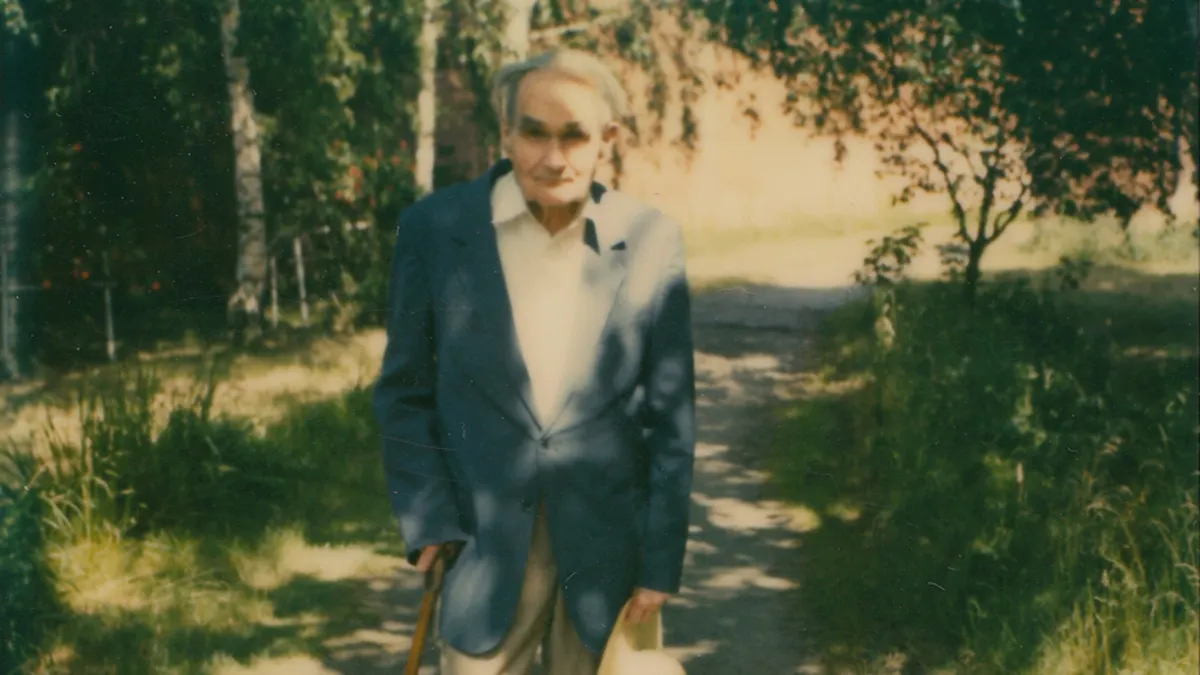
- Le Tissier noted that the prison garden cottage actually had four lamps, hence four identical cords. The one Hess used was found taut around his neck, but indeed still plugged in – because it was long enough to form a loop while attached. When guards found him, they unplugged it from the wall after cutting him down, which could explain why Melaouhi later saw it “still in the wall” (perhaps a second lamp’s cord). In short, nothing conclusively amiss there.
- The “mysterious American medics” were exactly that: medics, but not mysterious. Two U.S. Army orderlies were always on standby at Spandau for emergencies during any nation’s rotation. These were likely the two men Melaouhi saw – called in to help attempt resuscitation on Hess. They were not unknown intruders but part of normal protocol. By the 1980s, the four Allies cooperated pragmatically at Spandau, and having U.S. medical staff assist a British-run month was not unusual.
- The disorder in the room – overturned furniture – was, according to Le Tissier, a result of the frantic efforts to save Hess’s life. Heavy medics rushing in, lifting the inert Hess from the floor to perform CPR, would easily scatter chairs and tables. In a life-or-death scramble, neatness was not a priority.
- As for Hess’s arthritis and infirmity: yes, he was weak, but not incapable of action. Le Tissier pointed out that Hess still had enough dexterity to write letters in a clear hand. If he could manipulate a pen to form words, he could tie a simple slipknot in a cord. Also, Hess had previously attempted self-harm despite frailty. The act of hanging in this case did not require him to hoist himself; it likely involved tying one end of the cord around the window latch, fashioning a noose, placing it around his neck, then simply leaning or sitting forward to tighten it and cut off airflow. Tragically, not much strength is needed for an elderly person to asphyxiate themselves in that manner.
- The second autopsy’s findings can be interpreted in other ways too. Hanging, especially a partial suspension, can indeed leave horizontal ligature marks if the knot is under the chin. Dr. Spann himself did not assert it was murder, only that it was strangulation – which suicide by hanging technically is as well (self-strangulation). If someone had garroted Hess from behind, one might expect signs of struggle, bruises on Hess’s shoulders or chest from a knee in the back, etc., which were not reported.

Finally, consider Hess’s state of mind.
By 1987, he had spent over half his life in custody. He woke up every day alone, behind bars, decades after his cause and comrades had perished.
His few remaining pleasures – gardening, reading – were small comfort.
His letters to family were often despairing.
There were reports he told his son on a visit that “life is no longer worth living” (though the family disputes that, claiming he was still hopeful for release). The point remains: Hess was a man long acquainted with suicidal ideation. He had tried it before, more than once.
Occam’s Razor would suggest that, rather than a complex international assassination plot, a weary 93-year-old acting on his suicidal impulses finally found his opportunity that August afternoon.
–
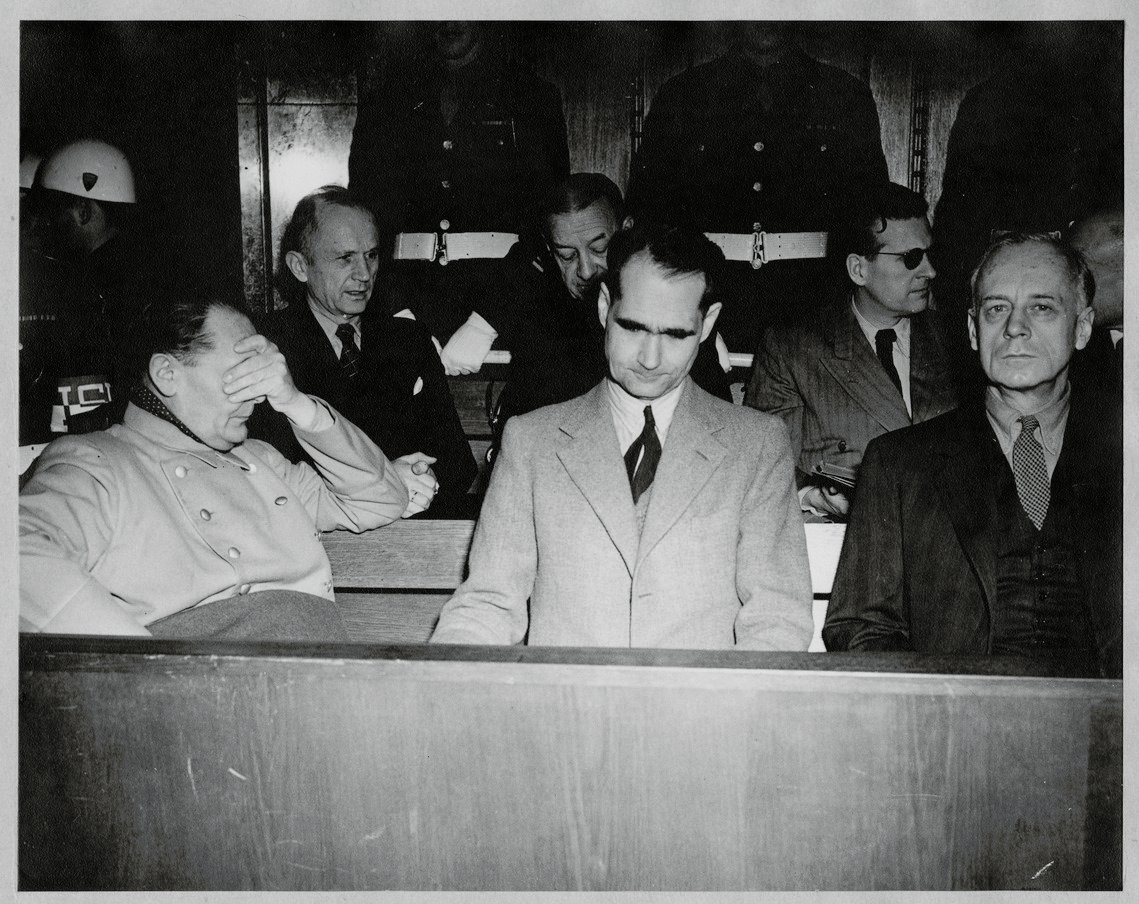
Conclusion
“Hess in death became what he had never truly been in his political life: a figure of central importance. His end was the final enigma in a life of contradictions, ensuring that the last secret of Spandau would be his own.”
Norman J.W. Goda, historian, in ‘Tales from Spandau: Nazi Criminals and the Cold War’
The mystery of Rudolf Hess’s death is a labyrinth of conflicting evidence and Cold War paranoia that still manages to leak through into the present day.
- For believers in the suicide verdict, the case is a simple one: a mentally unstable and depressed old man, facing the bleak prospect of dying in prison, finally succeeded in taking his own life. A pathetic end to a pathetic life, a final act of despair in the world’s most exclusive prison.
- For those who believe he was murdered, the story is a dark tale of political assassination, a final, brutal act of censorship to protect wartime secrets. In this version, Hess was not a madman, but a man who knew too much, silenced by the very people who had held him captive for nearly half a century.

The demolition of Spandau Prison erased the crime scene, ensuring that its secrets, whatever they may be, are likely buried forever under the foundations of a supermarket car park.
Perhaps the truth is that Hess, a man who gave himself over to a delusional ideology in his youth, became the subject of a thousand delusions in his death. He became a canvas onto which people projected their own beliefs about the hidden truths of power, espionage, and the unending shadows of the Second World War.
Over the years, dozens of books and documentaries have further muddied the waters. Titles like Hess: The British Conspiracy or Double Standards: The Rudolf Hess Cover-Up suggest subterfuge and secret plots. They weave tapestries involving rogue MI6 assassins, secret peace deals, doppelgängers, and even the Duke of Hamilton in a web of intrigue. These works, while fascinating, often contradict each other. One author’s grand theory is dismantled by the next author’s equally grand counter-theory.
What remains is the undeniable, haunting image: the fanatical disciple of Adolf Hitler, a man who once addressed frenzied torchlit rallies of thousands, dying alone in a garden shed.
***
If you’ve enjoyed reading this article, consider booking one of our private guided tours of Berlin.
Bibliography
Bird, Eugene K. The Loneliest Man in the World: The Inside Story of the 30-Year Imprisonment of Rudolf Hess. 1974.
Hess, Wolf Rüdiger. Who Murdered My Father, Rudolf Hess? 1989.
Le Tissier, Tony. Farewell to Spandau. 2008.
Melaouhi, Abdallah. I Looked His Killers in the Eyes!: The Last Secret of the Notorious Nazi Criminal Rudolf Hess Revealed by His Personal Carer. 2011.
Nesbit, Roy Conyers, and Georges Van Acker. The Flight of Rudolf Hess: Myths and Reality. 1999.
Padfield, Peter. Hess, Hitler & Churchill: The Real Turning Point of the Second World War. 2013.
Picknett, Lynn, Clive Prince, and Stephen Prior. Double Standards: The Rudolf Hess Cover-Up. 2001.
Plotnikov, Andrey. The Mystery of the Death of Rudolf Hess: The Diary of the Warder of the Spandau Allied Prison. 2018.
Schwarzwäller, Wulf. Rudolf Hess: The Deputy. 1988.
Sereny, Gitta. Albert Speer: His Battle with Truth. 1995.
Shirer, William L. The Rise and Fall of the Third Reich. 1960.
Speer, Albert. Spandau: The Secret Diaries. 1976.
Thomas, Hugh. The Murder of Rudolf Hess. 1979.
Thomas, W. Hugh. The Murder of Rudolf Hess. 1979.
HISTORICAL ARTICLES
Mythbusting Berlin

Are There Any Nazi Statues Left In Berlin? – Mythbusting Berlin
Visitors to Berlin often arrive expecting to find the physical remnants of the tyranny of the 20th century still standing – statues of dictators, triumphal arches, or bronze idols. Instead, they often find none. The stone symbols and statues of the Third Reich are still gazing down on them, however, hiding in plain sight. But why are there no statues of Hitler? Did the Allies destroy them all in 1945, or is the truth stranger
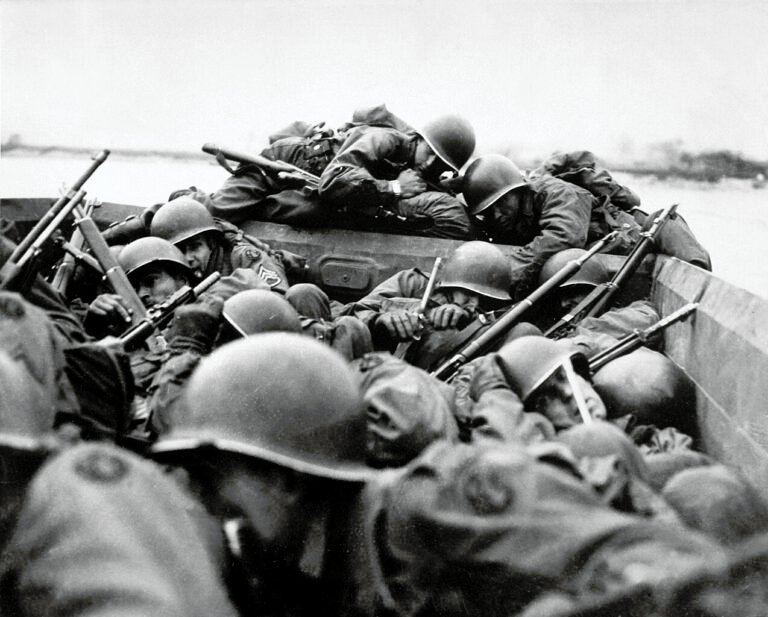
Could The Western Allies Have Captured Berlin? – Mythbusting Berlin
To contemplate a Western Allied capture of Berlin in 1945 is to challenge the established endgame of the Second World War. What was the true military and logistical feasibility of a Western Allied assault on the Nazi capital? What factors truly sealed Berlin’s fate, and what might have changed had the Allies pushed eastward?
Answering these questions means delving into the complex interplay of logistics, political maneuvering, and the competing visions for a post-war world
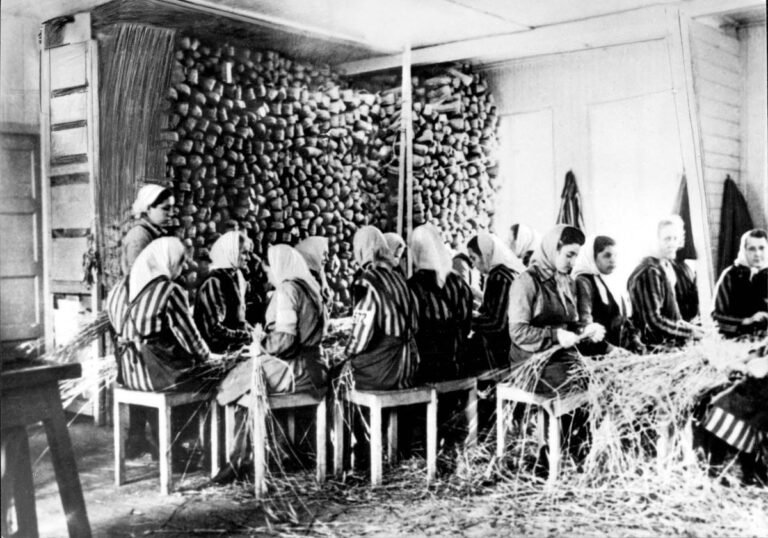
Did Any Of The Rothschild Dynasty Die In The Holocaust? – Mythbusting Berlin
The Rothschild name is synonymous with immense wealth, influence, and persistent conspiracy theories—especially during the era of Nazi Germany. Often targeted by antisemitic propaganda, the family’s survival during World War II has sparked myths about their supposed immunity from Nazi persecution. But did any Rothschild family member actually perish in the Holocaust? This article explores that compelling question, unraveling historical misconceptions and revealing the reality behind one of Europe’s most famous dynasties.
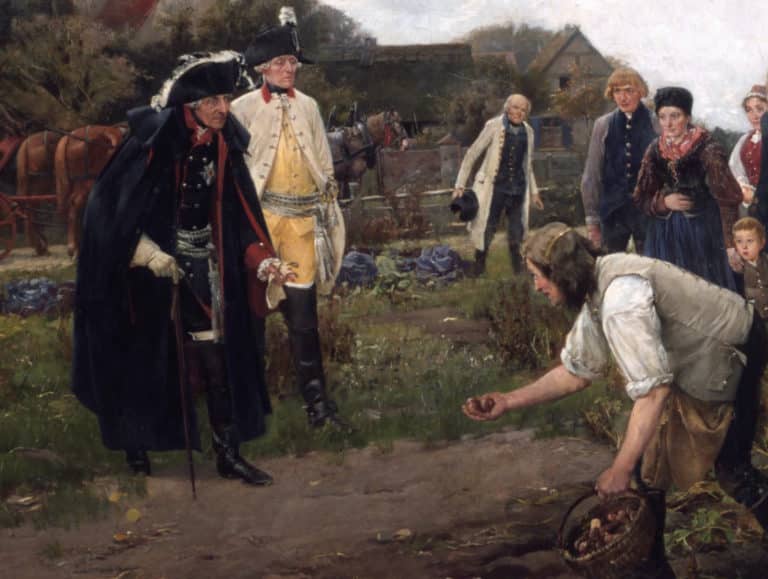
Did Frederick The Great Introduce The Potato To Germany? – Mythbusting Berlin
One of the more bizarre claims to fame attributed to the first King of Prussia is that the man who would go down in history known as Frederick the Great introduced the potato to Germany during his reign back in the 1700s. This starchy root vegetable has undoubtedly become a staple part of German cuisine – an essential addition to any plate of Schnitzel, Schweinshaxn, and Königsberger Klopse – however, whether Frederick the Great is
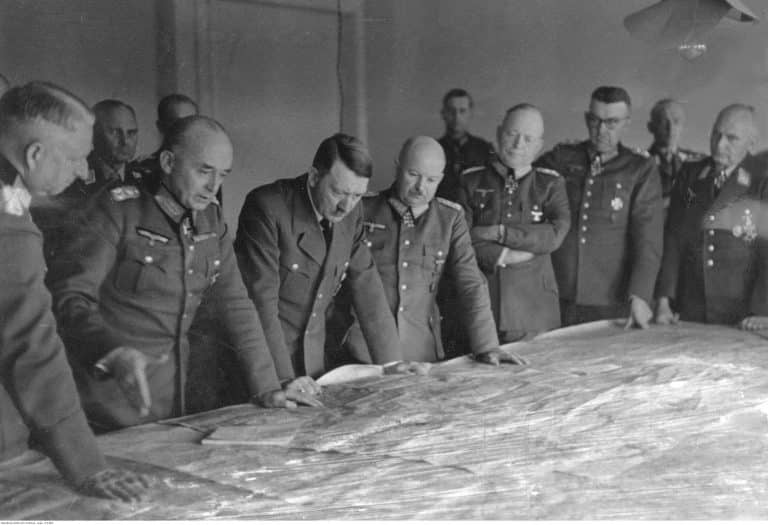
Did Hitler Escape To Argentina In 1945? – Mythbusting Berlin
Although Nazi leader, Adolf Hitler, certainly remains an inescapable figure, could there be any truth to the story of his escape to Argentina in 1945? That the most wanted man on earth could simply vanish, to spend the rest of his life peacefully in South American obscurity captivates imaginations. Yet, despite numerous investigations, this tale persists primarily as myth—fueled by speculation, hearsay, and conspiracy theories.
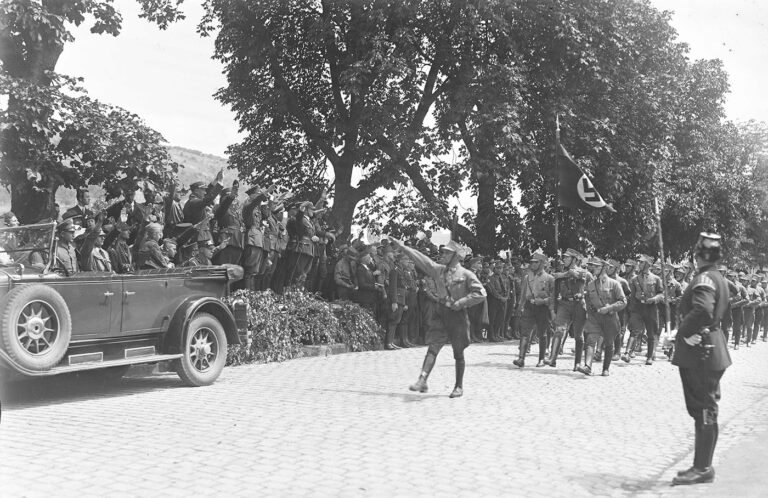
Did Hugo Boss Design The Nazi Uniforms? – Mythbusting Berlin
The idea that Hugo Boss – the man whose name now adorns expensive suits and fragrances – was the creative genius behind the Nazi uniforms suggests a terrifying collision of haute couture and holocaust – a marriage of high style and high crimes. The image is striking: a German tailor sketching the ultimate villain’s costume. But history, as usual, is far messier, more bureaucratic, and more banal than the internet memes suggest. To understand who
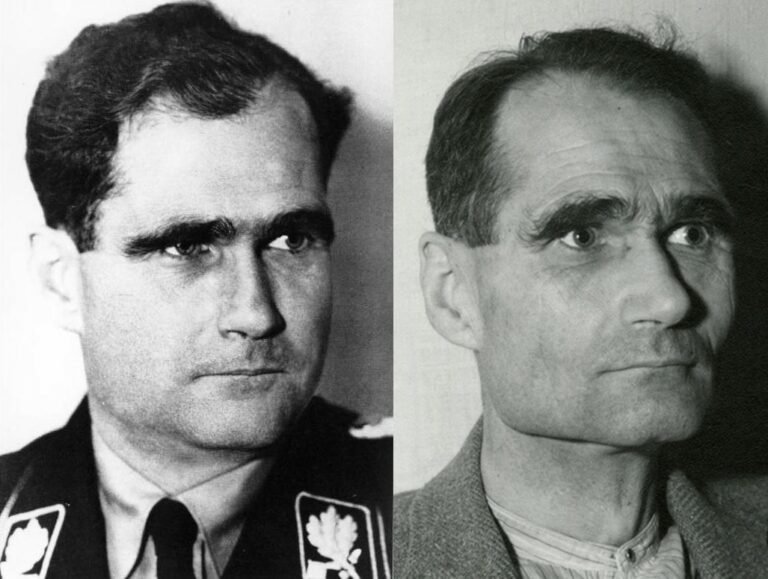
Did Rudolf Hess Really Commit Suicide? – Mythbusting Berlin
On a summer’s day in 1987, the last Nazi war criminal of the Nuremberg trials was found dead in a prison built for hundreds, yet for two decades, housed only him. The official verdict was suicide, a straightforward end to a life defined by fanaticism, delusion, and contradiction.
But the simplicity of the report belied the complexity of the man and the 46 years he had spent in Allied custody. In the meticulously controlled
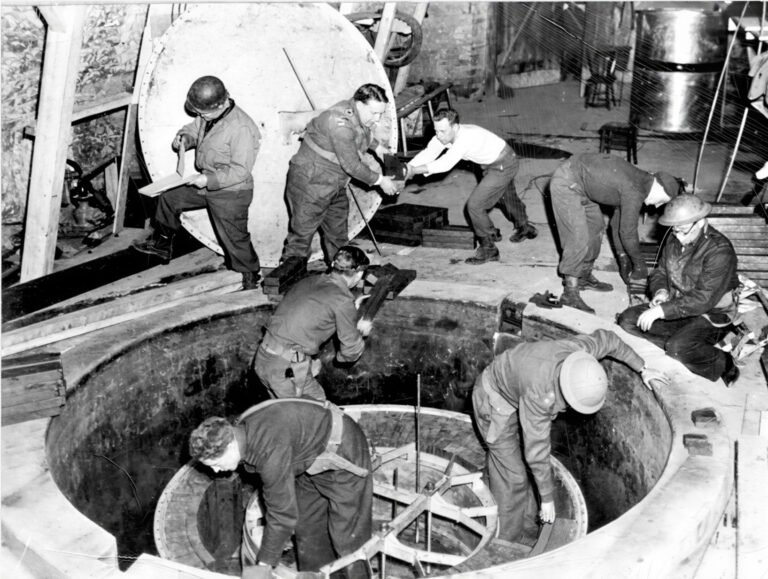
Did The Nazis Develop Nuclear Weapons? – Mythbusting Berlin
The Nazi obsession with super-weapons became so serious in the closing stages of the Second World that Adolf Hitler personally believed that such ‘Wunderwaffen’ both existed in a usable form – and would save the country from defeat. Had the Nazis managed to develop nuclear weapons by 1945 – the outcome of the war would surely have been different. But how close were Hitler, Himmler, and his henchmen to developing an A-bomb?

Did The Nazis Invent Decaf Coffee? – Mythbusting Berlin
Persistent rumors claim that Nazis preferred their coffee anything but pure, leading some to wonder if they might have influenced the development of decaffeinated coffee. Although decaf was already widely available across Europe by the mid-20th century, speculation continues: could the Nazis really have played a role in popularizing—or even discovering—this caffeine-free alternative, or is this simply another caffeinated conspiracy cooked up to sensationalize an ordinary historical detail?

Did The Nazis Invent The Bicycle Reflector? – Mythbusting Berlin
The fruits of wartime ingenuity are plenty – so many, in-fact, that it has become somewhat of a worn cliche that as the guns start firing the innovators get to work, often solving problems while providing more problems for the enemy to overcome.The kind of progress that results in the production of newer improved, more lethal weapons, such as to increase the chances of victory.
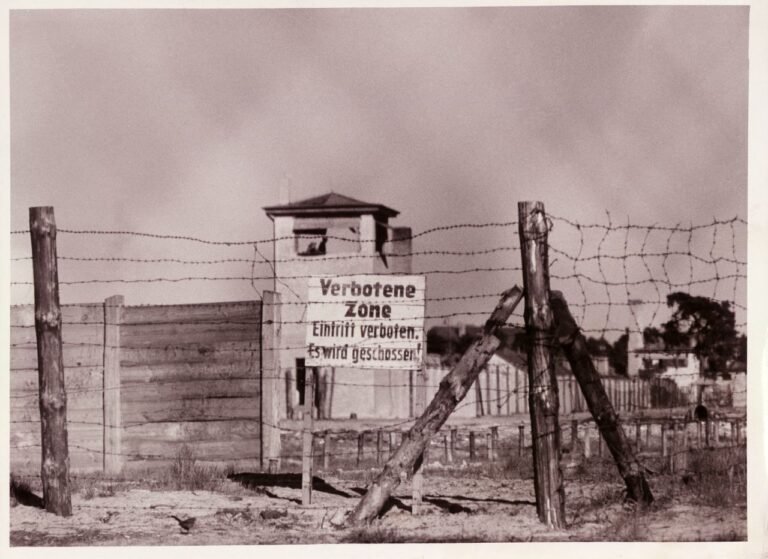
Did The Nazis Run The Largest Counterfeiting Operation In History? – Mythbusting Berlin
During the Second World War the Nazis masterminded an astonishing plot to destabilise Britain by flooding its economy with counterfeit banknotes. Crafted in secret by concentration camp prisoners, this forged fortune became the most ambitious counterfeiting operation ever attempted. But was it history’s largest? Dive into the extraordinary tale of Operation Bernhard,
rife with deception, survival, and intrigue—revealing the truth behind one of the Third Reich’s most audacious schemes and its surprising legacy.
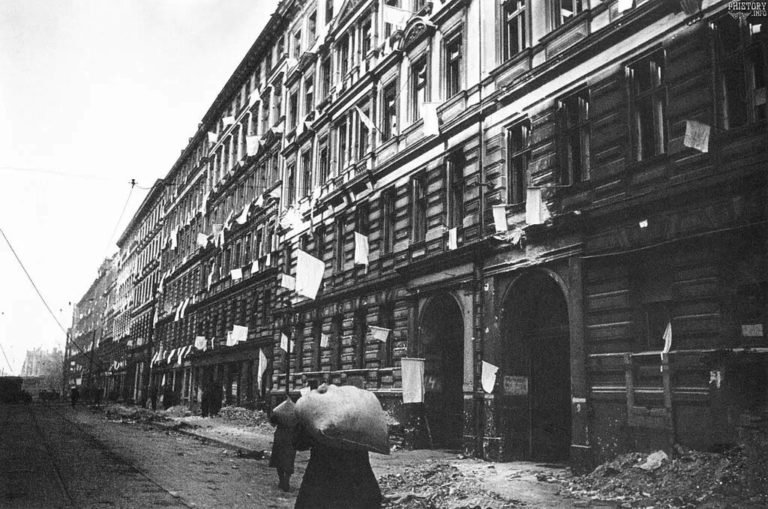
Did The Second World War End In Berlin? – Mythbusting Berlin
When is a war ever truly over? When the last shot is fired in anger would seem like the best measure. Rarely, though, is it possible to gain insight into such a moment.
Remarkably, a record still exists of such a moment at the end of the First World War on the Western Front. A seismic register and recording of the last belching battery of British guns firing artillery across no-man’s-land, followed by a profound
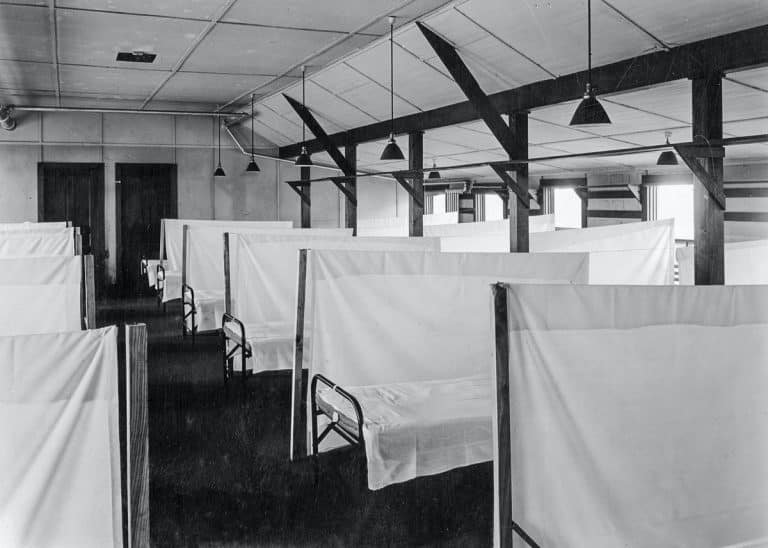
Did The Spanish Flu Pandemic Help The Nazis Take Power? – Mythbusting Berlin
The devastating Spanish Flu pandemic of 1918-1919 struck amid Germany’s post-war turmoil, compounding social instability, economic hardship, and widespread political disillusionment. Could this catastrophic health crisis have indirectly paved the way for Nazi ascension? While often overshadowed by war and revolution, the pandemic’s profound psychological and societal impacts arguably contributed to the perfect storm, enabling extremist ideologies—including Nazism—to gain popularity and ultimately seize power in a fractured Germany.
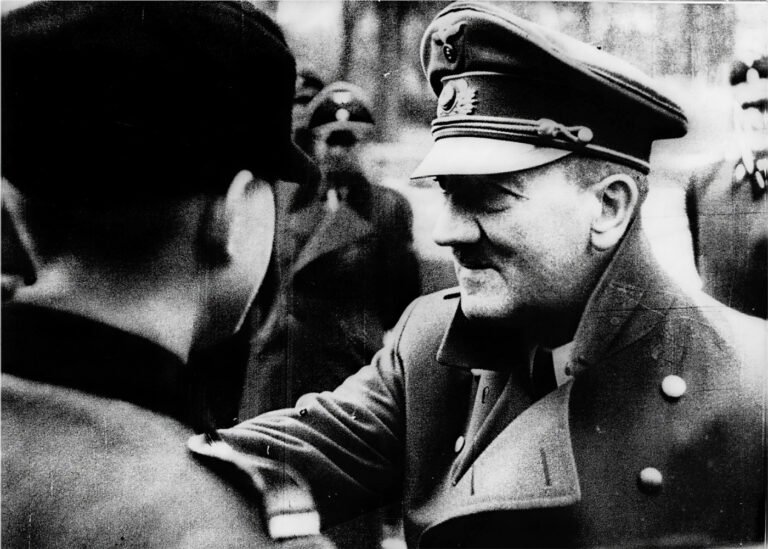
Have Adolf Hitler’s Remains Been DNA Tested? – Mythbusting Berlin
In the smouldering ruins of Berlin in 1945, the world’s most wanted man vanished. Did Adolf Hitler, as official history attests, die by his own hand in the Führerbunker? Or did he escape, fuelling a thousand conspiracy theories that have echoed for decades? For years, the Soviets claimed to hold the gruesome proof of his death: a skull fragment and a set of teeth, locked away in Moscow archives. But in an age of definitive
How Did The Nazi Concentration Camps Differ From The Soviet GULAG?
The Nazi concentration camps and Soviet Gulag system have often been conflated in popular imagination—twin symbols of twentieth-century totalitarian horror. Yet the two systems operated on fundamentally different principles. One extracted labor to fuel industrialisation while accepting mass death as collateral damage; the other evolved into purpose-built machinery of genocide. Understanding these distinctions isn’t merely academic—it reveals how different ideologies produce different atrocities, and why Germany and Russia reckon with these legacies so differently today.

How Long Did It Take To Build The Berlin Wall? – Mythbusting Berlin
It is one of the most enduring images of the 20th century: a city divided overnight. The popular narrative tells us that Berliners went to sleep in a unified city and woke up in a prison. While the shock of August 13th 1961, was very real, the idea that the ‘Wall’ appeared instantly is a historical illusion. The physical scar that bisected Berlin was not a static creation, but a living, malevolent beast that evolved

How Many Assassination Attempts On Adolf Hitler Were There? – Mythbusting Berlin
Nazi leader, Adolf Hitler, projected an aura of invincibility, a man of destiny shielded by providence. But behind the carefully constructed image of the untouchable Führer lies a story of constant threat, of bombs that failed to detonate, and errant bullets that missed their mark. Unearth the hidden history of the numerous attempts on Hitler’s life as we explore the courage of those who tried to change the course of history and the devil’s luck
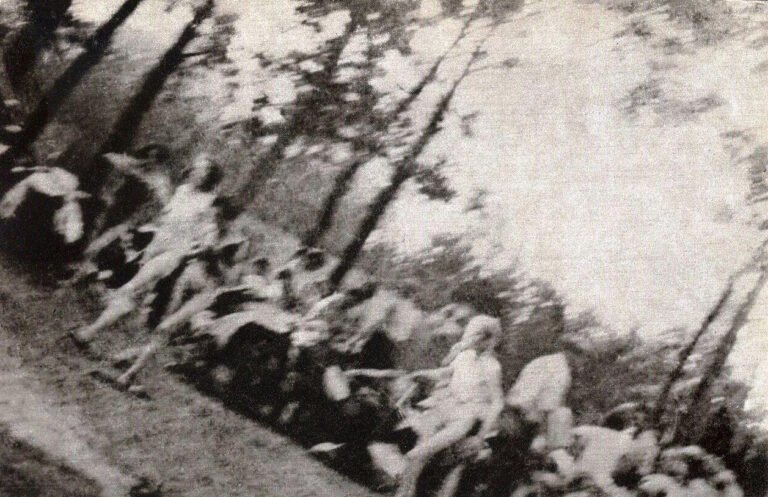
How Many Jews Died In The Holocaust? – Mythbusting Berlin
The answer to the question posed of how many Jews died in the Holocaust is a simple one: too many. That merely one death was an unforgivable obscenity is a fundamental and necessary realisation in understanding the capriciousness of this unparalleled racial genocide. To comprehend, however, the full number of Jews murdered in Europe by the Nazi regime in the 1930s and 1940s is a detective story of epic proportions: the evidence overwhelming, multifaceted, and
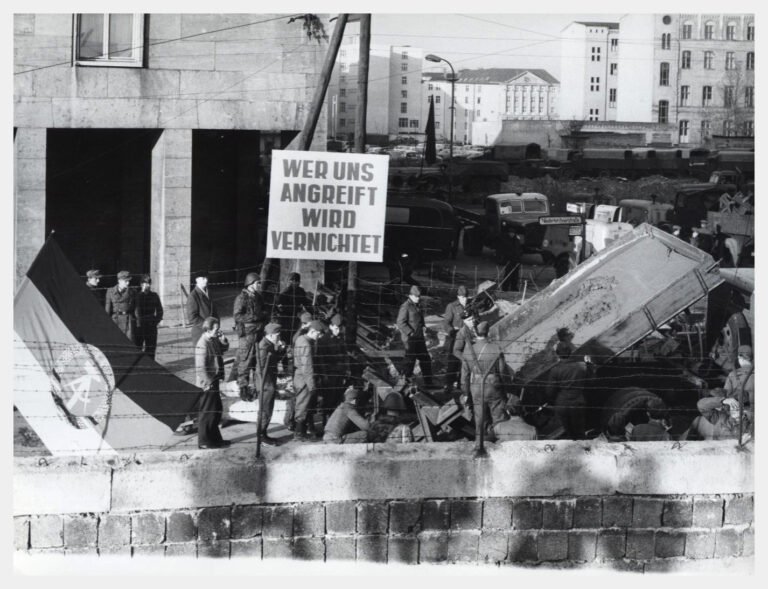
How Many People Died Trying To Escape East Germany? – Mythbusting Berlin
The image of the Berlin Wall is seared into our collective memory, a concrete symbol of Cold War oppression. We think of the daring escapes and the tragic deaths of those who failed. But that well-known number is only a fraction of the truth. The story of those who died trying to escape East Germany is far broader and more complex than most imagine, stretching along a thousand-kilometer border and out into the cold waters
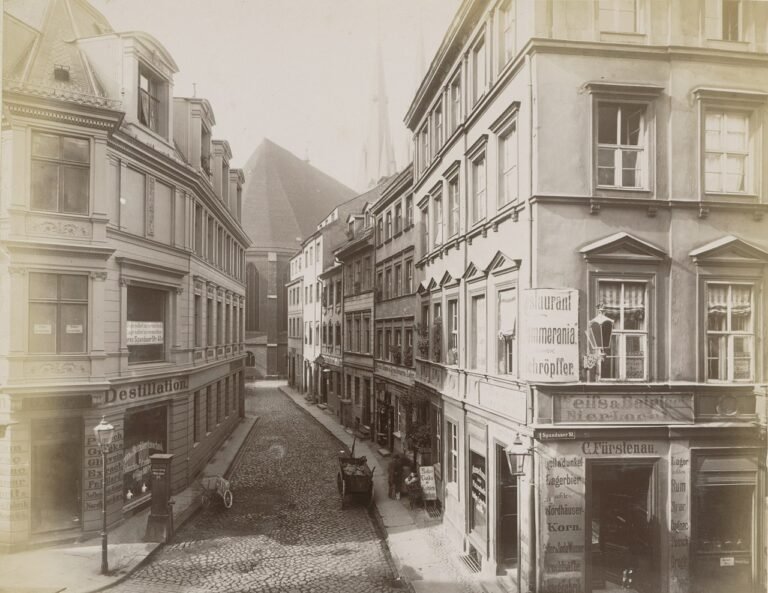
How Old Is Berlin? – Mythbusting Berlin
A relatively new arrival in Europe, Berlin is over 1000 years younger than London, nevermind Rome or Athens, Jerusalem or Jericho. Just how old is Berlin though?
A question fraught with false assumptions and distortions – that has more often than not been answered with propaganda as it has with the cold hard truth.









